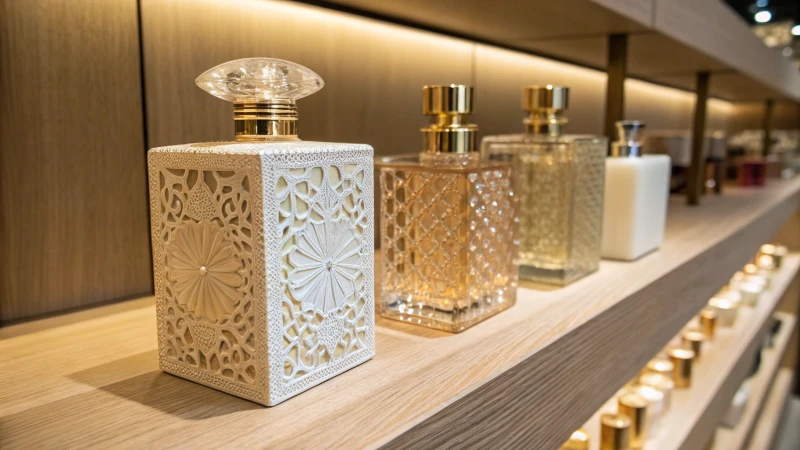
Have you ever unwrapped a luxury fragrance and marveled at its exquisite packaging?
Personalized mold design for luxury fragrance packaging uses cutting-edge technologies like micro molding to craft ultra-detailed designs. This trend focuses on creating unique, intricate patterns that boost brand identity and enhance consumer experience. With a shift towards eco-friendly solutions, advanced materials and sustainable practices are becoming crucial components.
Let me tell you, it’s like witnessing art and technology dance together. Imagine holding a perfume bottle that’s not just another pretty face but a statement of elegance and innovation. While personalized mold designs are revolutionizing the luxury fragrance world, they do more than just look good. They balance the delicate interplay of beauty, sustainability, and cutting-edge technology.
Diving deeper, it’s clear that these trends are about more than aesthetics—they’re about functionality and environmental responsibility too. From the precision of micro mold technology that allows for those jaw-dropping details to the use of sustainable materials that don’t compromise on luxury, it’s all part of a broader movement. This is where the art of packaging meets the science of innovation, creating something truly extraordinary.
Micro molding enables intricate fragrance packaging designs.True
Micro molding allows for precise detailing, enhancing design complexity.
Sustainable practices are not part of luxury packaging trends.False
Luxury packaging trends include eco-friendly materials and practices.
How is Micro Mold Technology Enhancing Design Precision?
Ever marveled at the flawless designs on your favorite luxury products? Micro mold technology is the secret behind such precision.
Micro mold technology enhances design precision by employing electron beam processing and laser engraving to achieve detailed micron-level accuracy, minimizing flaws and boosting product quality.
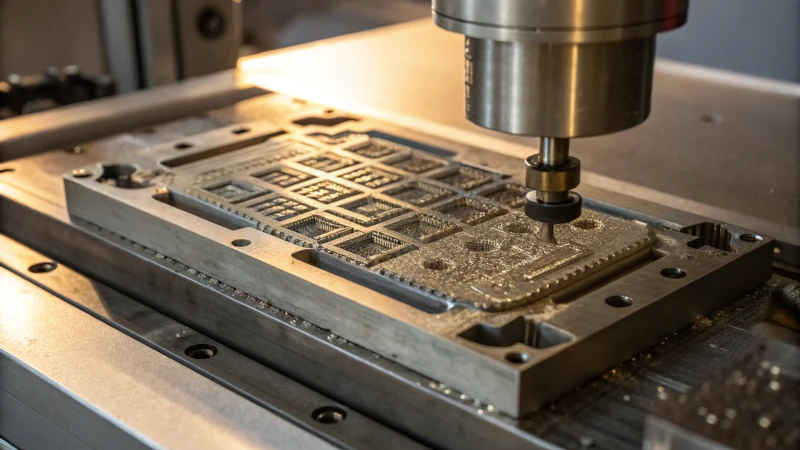
The Role of Electron Beam Processing
I remember the first time I saw the impact of electron beam processing on design precision. It was like watching an artist perfect their masterpiece with just the right brushstrokes. This technique offers unparalleled control over energy application to surfaces, ensuring they are smooth and glossy. Industries that require micron-level precision1, such as luxury packaging and medical devices, benefit immensely from this method.
| Advantages of EBP | Applications |
|---|---|
| High gloss finish | Luxury perfume packaging |
| Surface smoothness | Intricate medical devices |
| Minimal imperfections | Advanced automotive components |
Laser Engraving for Intricate Designs
Laser engraving is another fascinating aspect of micro mold technology. I recall a project where we had to engrave tiny, intricate patterns on a high-end product. The precision was awe-inspiring—no more flaws from traditional mold techniques! This technology is a game-changer for sectors focusing on detailed engravings2.
- Benefits:
- Precision engraving on complex designs.
- Reduces time and cost associated with manual engraving.
- Improves durability of engraved features.
Integrating Nanocoating Processes
Adding another layer of sophistication, nanocoatings enhance surface properties, making them more durable and resistant to wear. This is crucial for maintaining the quality of high-end molds3. I’ve seen how these coatings help products withstand environmental factors while keeping their aesthetic appeal intact.
- Key Features:
- Enhanced resistance to environmental factors.
- Improved mold lifespan and performance.
- Ability to maintain aesthetic appeal over time.
By leveraging these cutting-edge technologies, micro mold technology significantly boosts design precision, setting a new standard for manufacturing quality and efficiency across various industries. It’s exciting to be a part of this technological evolution, where every detail matters and innovation leads the way.
Electron beam processing ensures surface smoothness.True
EBP provides controlled energy application, ensuring smooth surfaces.
Nanocoatings decrease mold lifespan and performance.False
Nanocoatings enhance durability, increasing mold lifespan and performance.
How Does Sustainability Impact Mold Design?
When I first dived into the world of mold design, I quickly realized that sustainability wasn’t just a trendy term but a vital force transforming our entire approach.
Sustainability in mold design means choosing eco-friendly materials, enhancing energy efficiency, and reducing waste. It also involves creating durable, recyclable molds that minimize environmental impact while boosting efficiency.
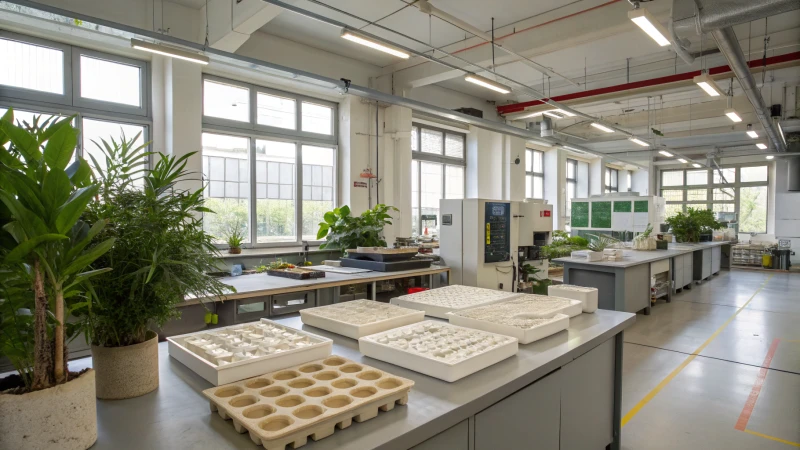
Integrating Eco-Friendly Materials
I remember the first time I held a mold made from recycled metal—it was both thrilling and eye-opening. Traditionally, molds were made from metals like steel and aluminum, known for being energy-intensive. But now, designers are exploring biodegradable and recycled alternatives4 like bioplastics, which have reshaped how we think about materials.
Optimizing Energy Efficiency
There was a moment during my early days in mold design when I watched an electron beam processing machine at work. Seeing it lower energy consumption compared to traditional methods was fascinating. Techniques like this and laser engraving ensure that every step of mold creation uses resources wisely.
| Sustainable Practice | Description |
|---|---|
| Biodegradable Materials | Use materials that decompose naturally |
| Energy-Efficient Processes | Employ methods that consume less energy |
| Durable Designs | Create molds that last longer, reducing waste |
Designing for Durability and Recyclability
I’ve seen firsthand how creating molds with longevity in mind can drastically reduce waste. Designing molds that are easy to disassemble encourages recycling. For instance, modular designs can be broken down into recyclable components, supporting a circular economy approach. This is where modular design5 strategies really shine.
Minimizing Waste Through Precision
Precision in mold design can seem like an art form—one that I’ve come to deeply appreciate. Technologies like micro mold technology allow for creating detailed designs without excess material usage. This precision means fewer resources are needed, leading to less environmental impact6.
By focusing on these areas, I’ve witnessed how mold designers can significantly lessen the ecological footprint of their operations while maintaining high standards of quality and performance.
Bioplastics are used in sustainable mold design.True
Bioplastics are eco-friendly alternatives to traditional materials in molds.
Energy-efficient technologies increase waste in mold design.False
Energy-efficient technologies reduce energy use and minimize waste.
How Do Multi-Material Designs Impact Production?
Imagine being at the forefront of innovation, where multi-material designs are not just reshaping products but revolutionizing how we create them. It’s like crafting a masterpiece with a new palette of possibilities.
Multi-material designs impact production by enhancing product functionality, enabling complex geometries, and improving material efficiency. They leverage technologies like additive manufacturing to create innovative solutions and streamline manufacturing processes.
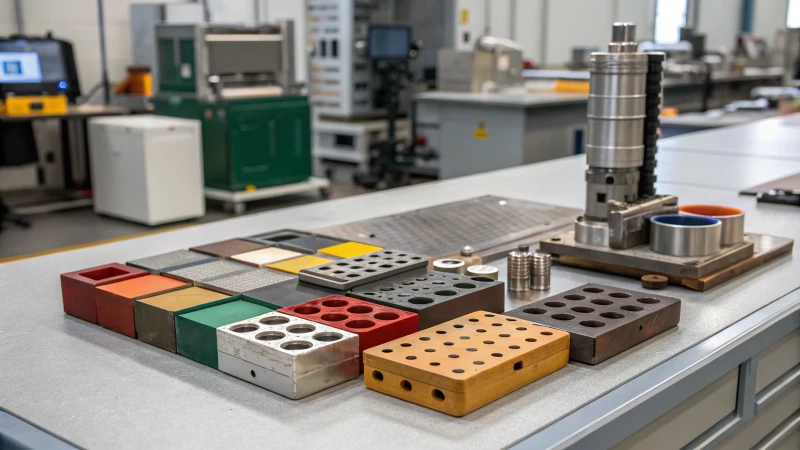
Leveraging Additive Manufacturing for Multi-Material Designs
When I first heard about additive manufacturing, I felt like a kid in a candy store. The idea of creating something layer by layer was just fascinating. Imagine using this technology to craft an intricate sculpture, where every layer adds depth and complexity to the final piece. In the world of multi-material designs7, additive manufacturing is like having a magic wand that lets you blend metals and polymers seamlessly, creating strong yet lightweight components without any extra assembly steps.
Consider the aerospace industry, where lightweight yet strong components are crucial. With additive manufacturing, you can create parts that are strong yet light, combining metals and polymers in ways that traditional methods can’t touch. This capability speeds up production and cuts down on waste.
Enhancing Product Functionality
There’s something incredibly satisfying about seeing a product come together piece by piece, each part meticulously designed for its role. Multi-material designs give us the freedom to tailor products to specific functions. Think about electronics—combining conductive and insulative materials within a single component can make devices not just work better but also be easier to assemble.
| Feature | Benefit |
|---|---|
| Conductive Material | Improved electrical pathways |
| Insulative Material | Enhanced safety and reliability |
Overcoming Production Challenges
Of course, it’s not all sunshine and rainbows. Multi-material designs bring their own set of challenges. It’s like trying to bake a cake with different layers that need different temperatures; you have to get everything just right to make sure it doesn’t collapse. In automotive manufacturing, integrating metal and plastic components means managing temperatures carefully to avoid deformation.
Advanced temperature control systems8 are like the secret ingredient here, ensuring that everything stays intact and performs flawlessly.
Sustainability Through Material Efficiency
As someone who’s passionate about sustainability, I find multi-material designs incredibly exciting. They’re like a breath of fresh air in an industry that desperately needs it. By optimizing material usage, we can reduce waste and our carbon footprint. In packaging, for instance, using composite materials means less raw material is needed while still maintaining durability.
Composite materials9 in packaging not only minimize waste but also enhance recyclability, aligning perfectly with the growing demand for eco-friendly solutions.
So while multi-material designs can complicate the production process, they’re also opening doors to innovation and efficiency that were once unimaginable. It’s an exciting time to be involved in this field!
Additive manufacturing reduces assembly steps in aerospace.True
AM combines metals and polymers in a single part, minimizing assembly.
Multi-material designs always simplify production processes.False
They introduce material compatibility challenges, complicating production.
What Are the Cost Implications of Custom Mold Designs?
Diving into the world of custom mold designs feels like entering a realm where creativity meets engineering brilliance. These designs shape not just products but entire brand experiences.
Custom mold designs come with various cost implications, including initial investment, material choice, production efficiency, and longevity. Balancing these elements is crucial for manufacturers to manage costs effectively and remain profitable.
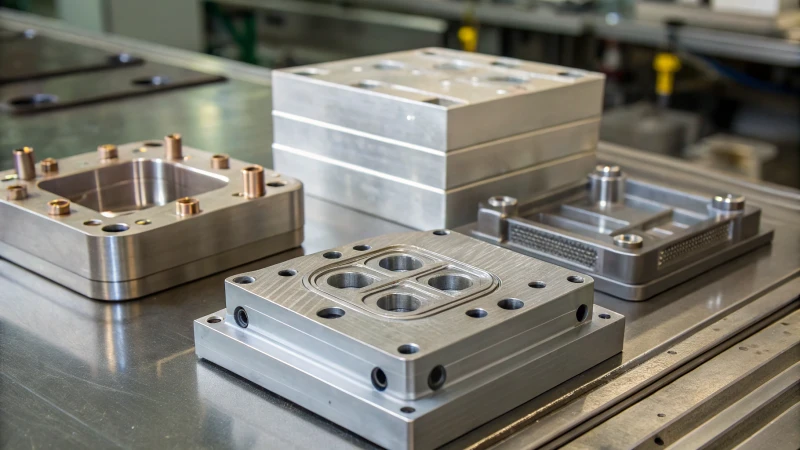
Initial Investment Costs
When I first delved into custom mold designs, the initial investment seemed daunting. It’s like buying a house; the upfront costs are significant because you’re paying for precision engineering and specialized materials. But here’s the kicker—by embracing technologies like 3D printing10, I discovered that prototyping could cut down on errors and wastage. This approach was a game-changer in managing costs efficiently.
Material Selection and Costs
Choosing the right material felt akin to picking the perfect fabric for a bespoke suit. Each option comes with its price and durability. I remember grappling with whether to go for something flashy like titanium or stick with reliable aluminum. In the end, understanding the long-term benefits of each material helped me make an informed decision. Here’s a quick snapshot of what I found:
| Material | Cost (per unit) | Durability |
|---|---|---|
| Titanium Alloy | High | Very High |
| Aluminum Alloy | Moderate | Moderate |
| Plastic | Low | Low |
Production Efficiency
I can’t stress enough how modularity in design can boost production efficiency. Think of it like having interchangeable parts in a Swiss Army knife—versatile and ready for anything. By adopting modular designs11, I could reduce downtime significantly and keep the production line humming.
Longevity and Maintenance
Advanced treatments like laser hardening were revelations in my journey. Sure, the initial costs were steeper, but it was like investing in a quality mattress—the reduced maintenance frequency paid off over time, ensuring a longer lifespan for the molds.
Balancing Luxury and Sustainability Costs
In today’s eco-conscious market, balancing luxury and sustainability is no longer optional—it’s a necessity. I found that recyclable materials12 often required custom molds to handle their unique properties. While this added to initial costs, the long-term savings from complying with environmental regulations were substantial.
Custom molds always reduce production costs.False
While they can enhance efficiency, initial costs may outweigh savings.
Titanium alloys offer the highest durability in mold design.True
Titanium alloys are known for their superior wear resistance and lifespan.
Conclusion
Personalized mold design in luxury fragrance packaging emphasizes micro molding, sustainability, and multi-material integration to enhance aesthetics, functionality, and environmental responsibility while maintaining brand identity.
-
Discover how electron beam processing achieves high precision and quality in manufacturing, enhancing product reliability. ↩
-
Learn about the advantages of laser engraving in achieving intricate and precise designs with minimal flaws. ↩
-
Explore how nanocoating enhances mold durability and maintains design quality in various applications. ↩
-
Explore the benefits and examples of using eco-friendly materials in mold design, such as bioplastics or recycled metals. ↩
-
Discover how modular design contributes to sustainable practices by facilitating easier recycling and reusability. ↩
-
Understand how precision techniques reduce waste and improve sustainability in mold manufacturing. ↩
-
Explore how additive manufacturing enables the creation of complex multi-material parts, offering insights into its impact on design and production. ↩
-
Learn about systems that ensure precise temperature control during production, crucial for multi-material designs involving different thermal properties. ↩
-
Discover how composite materials contribute to sustainability by reducing waste and improving recyclability in packaging solutions. ↩
-
Discover how 3D printing reduces prototyping costs and accelerates design iterations. ↩
-
Explore how modular molds improve production flexibility and reduce lead times. ↩
-
Learn about cost-effective strategies for using sustainable materials in mold design. ↩



